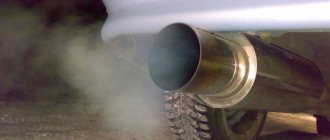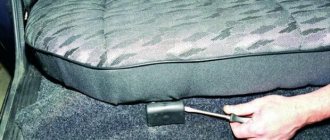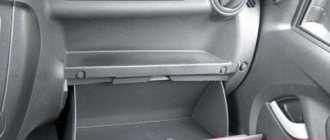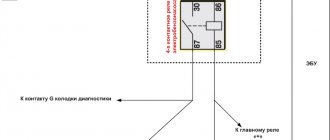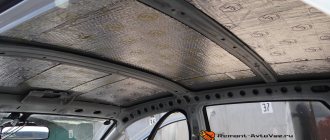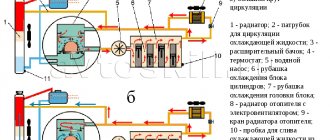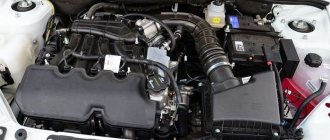Content
How to insulate a car radiator for the winter is a rather multifaceted question; there are several different ways to carry out this work. At the same time, there are several myths circulating among drivers about this modification of the cooling system. Despite the fact that they are not true, these myths are quite tenacious and popular:
- Reducing fuel consumption by 20% when using special protective equipment. This myth is inspired by the advertising efforts of manufacturers of such insulation. In practice, of course, fuel consumption is slightly reduced due to faster warm-up. But the savings are much lower. But such kits are very expensive;
- Insulating the radiator makes it easier to start the engine in the morning. If your car has been parked for only a couple of hours, the insulation will retain some of the heat, and the engine will start faster and easier. Having stood in the cold all night, the engine will cool down even with very good insulation. Therefore, insulating the radiator will not give you any advantage when starting up.
Now that you have become familiar with the mythology of insulating the radiator and engine compartment, you can begin the actual work of protecting this part of the car from the cold.
DIY insulation for the radiator grille
It is better to learn how to properly close the radiator for the winter from experienced drivers. There’s nothing complicated about it, but some extra advice won’t hurt. Be interested in what and how, preferably after mastering it, why it is needed and getting an answer to the question whether this method of insulation actually helps. Making a final decision is possible only if the needs of the owner and the guarantees of this method of thermal insulation coincide.
Restricting air access to the engine through the radiator grille in winter gives:
- Reducing the time it takes to fully warm up the engine during frequent short trips.
- Acceleration of coolant reaching operating temperature when warming up the power plant while driving.
- Preservation of heat in the engine compartment when driving on the highway.
Practical significance
Premium cars have long been equipped with a system of dampers that regulate the volume of air flowing over the engine. Ensuring that the power plant quickly reaches operating temperature and maintaining it within specifications helps preserve the factory life of internal combustion engine parts.
Natural thermal conditions in cold weather are only beneficial and here’s why:
- Reducing the warm-up time leads to a decrease in fuel consumption, since the ECU generates an over-rich mixture when it is cold.
- Reducing the proportion of air cooling at high speed allows the interior heater to operate at full capacity.
The help of insulation is especially noticeable at temperatures below -20°C: the computer displays suburban fuel consumption values close to summer values, and the stove heats up noticeably even at idle. This fact is confirmed by both owners of carburetor cars and owners of injectors. However, you can only get by with an additional homemade car interior heater designed for 12 Volts.
The position of companies specializing in the production of insulating components is clear. Often, when asked whether it is necessary to close the radiator in winter, they put forward additional arguments in favor:
- Fuel savings up to 25%.
- Eases cold starts.
- Increased battery life.
It is quite clear that the savings percentage is overestimated, and the closed radiator grill does not affect the morning start-up in any way - the engine managed to freeze overnight. There is also no gentle operation of the battery, since you still have to turn the crankshaft in thick oil.
How to insulate a car radiator for the winter is a rather multifaceted question; there are several different ways to carry out this work. At the same time, there are several myths circulating among drivers about this modification of the cooling system. Despite the fact that they are not true, these myths are quite tenacious and popular:
- Reducing fuel consumption by 20% when using special protective equipment. This myth is inspired by the advertising efforts of manufacturers of such insulation. In practice, of course, fuel consumption is slightly reduced due to faster warm-up. But the savings are much lower. But such kits are very expensive;
- Insulating the radiator makes it easier to start the engine in the morning. If your car has been parked for only a couple of hours, the insulation will retain some of the heat, and the engine will start faster and easier. Having stood in the cold all night, the engine will cool down even with very good insulation. Therefore, insulating the radiator will not give you any advantage when starting up.
Now that you have become familiar with the mythology of insulating the radiator and engine compartment, you can begin the actual work of protecting this part of the car from the cold.
Verdict
Insulating the radiator speeds up the engine's return to operating thermal conditions and helps maintain it in severe frosts, which will have a positive effect on fuel consumption and the operation of the standard stove. A simple and working way is to place a piece of cardboard in front of the heat exchanger.
A more effective measure is to cover the radiator grille from the inside with foil insulation or with dermantine from the outside: the absence of cold air blowing over the parts of the power plant helps to speed up warming up while driving. Factory-made sets of overlays and masks are no less effective, but are expensive and do not always comply with the aesthetic picture.
Ready-made kits
In auto parts stores you can find various kits for insulating the engine and radiator for the winter. The advantage of such an acquisition is that there is no need to independently select materials and adjust them. But this approach also has disadvantages. First of all, the cost is quite high. At the same time, they sell you simply cut insulation, packed in a bag. Exactly the same material can be purchased at any hardware store.
Another drawback is low frost protection. The materials used for such kits are far from being of the highest quality. Therefore, even at -12°C, insulating elements cannot cope. In this regard, many people strive to insulate the engine compartment with their own hands.
How to insulate?
The radiator is insulated in 2 ways. They differ in complexity of execution:
- The easiest option is to take a piece of thermal insulation and insert it in front of the radiator. This allows you to remove and install insulation if necessary without wasting extra time;
- Other drivers place insulation in front of the false radiator grille. For this purpose, a cover is sewn from leatherette. Insulation is placed in it. And all this is attached to the grille. The case should have valves that allow air access to the radiator as the temperature rises.
But insulating the radiator is not enough. You also need to pay attention to the engine. The easiest way is to cover the inside of the hood and engine compartment with insulating material. This will significantly reduce heat loss. Another method of insulation is to make a so-called car blanket (see the article “Which car blanket is best to choose”). For this, heat-resistant material is purchased. It is cut to the size of the engine compartment. After which the resulting “blanket” is covered with the engine. In regions with severe frosts, it would be a good idea to cover the crankcase and sides of the engine with insulation.
Source: https://AutoManya.ru/lada-drugoe/uteplenie-reshetki-radiatora.html
Ready-made kits
In auto parts stores you can find various kits for insulating the engine and radiator for the winter. The advantage of such an acquisition is that there is no need to independently select materials and adjust them. But this approach also has disadvantages. First of all, the cost is quite high. At the same time, they sell you simply cut insulation, packed in a bag. Exactly the same material can be purchased at any hardware store.
Another drawback is low frost protection. The materials used for such kits are far from being of the highest quality. Therefore, even at -12°C, insulating elements cannot cope. In this regard, many people strive to insulate the engine compartment with their own hands.
Insulation yourself
The easiest option is to insert pieces of cardboard between the grille and the radiator. This allows you to slightly reduce heat loss when traveling in winter. But this is not very effective. Besides, it's not very aesthetically pleasing. Therefore, it is best to use more modern insulation methods. Please note that working with radiator insulation is not enough.
You should also pay attention to the entire engine and engine compartment. When installing, be sure to securely fasten the insulation correctly. If it accidentally gets under the generator or timing belts, you will have to make expensive repairs to these systems.
How to insulate?
The radiator is insulated in 2 ways. They differ in complexity of execution:
- The easiest option is to take a piece of thermal insulation and insert it in front of the radiator. This allows you to remove and install insulation if necessary without wasting extra time;
- Other drivers place insulation in front of the false radiator grille. For this purpose, a cover is sewn from leatherette. Insulation is placed in it. And all this is attached to the grille. The case should have valves that allow air access to the radiator as the temperature rises.
But insulating the radiator is not enough. You also need to pay attention to the engine. The easiest way is to cover the inside of the hood and engine compartment with insulating material. This will significantly reduce heat loss. Another method of insulation is to make a so-called car blanket (see the article “Which car blanket is best to choose”). For this, heat-resistant material is purchased. It is cut to the size of the engine compartment. After which the resulting “blanket” is covered with the engine. In regions with severe frosts, it would be a good idea to cover the crankcase and sides of the engine with insulation.
Conclusion
. Winter is quite a difficult time for every car enthusiast. Other inconveniences include low temperatures. Interfering with the engine's ability to operate normally. Therefore, many people wonder how to insulate a car radiator for the winter. At the same time, the insulation work is not difficult. The main thing is to do everything carefully.
Winter is the most unfavorable time of year for operating a car. This is primarily due to starting problems and prolonged warm-up of the engine.
But the dilemma can be easily resolved if certain measures are taken. Below we consider the most important questions:
- How to insulate a car hood?
- What are the pros and cons of a car blanket, and how to use it correctly?
- What materials are used for thermal insulation?
- Why and how to close the radiator grille for the winter?
Let's consider each of the questions in detail.
How to insulate the Lada Granta?
Many car owners, in the old-fashioned way, in severe frosts, insulate their cars with cardboard inserted between the bumper and the radiator grille, some throw pieces of rags on the radiator, and the most advanced ones clamp a sheet of thick Izolon with the hood lid. All these actions lead to the same result - in the car at -40 and below it becomes really warmer, the engine cools down more slowly and warms up faster. But with all this, the appearance of the car suffers greatly. But thanks to the imagination of the Lada Granta owners, an inexpensive, effective and, most importantly, attractive method of insulating a car was found.
To work, we will need insulation for pipes with a diameter of 34 and 52 millimeters. A set of two such tubes will cost you approximately 100-150 rubles, which is relatively inexpensive. Next, we measure the required length of the tube, make slits in the places where there are radiator grille amplifiers and simply insert the resulting structure into the spacer between the ribs of the radiator grille. We place a 34 mm tube in the upper part of the radiator grille, and a 52 mm tube in the lower part. Closing all four fins in the bumper allows you to maintain engine operating temperature even in temperatures down to -50 when driving on the highway. Additionally, those who lack these measures can buy “AutoTeplo”, the average market cost is 1,500 rubles.
However, it is worth noting that too much insulation can only be used at temperatures below -30; at higher temperatures, I recommend gradually removing it from bottom to top for each position as the outside temperature increases. The use of insulation at temperatures of -15 and above is not advisable.
As you can see in the final photo, the result is not very noticeable, and if you manage to find black tubes, it will not be noticeable at all.
Methods for insulating the hood
Many car owners are interested in what is the point of insulating the hood, because the manufacturer has already provided the necessary protection.
In fact, this is not enough. Additional protection is required to solve the following problems:
- Accelerate engine warm-up and reduce fuel consumption;
- Eliminates the appearance of ice on the surface of the hood, which negatively affects the paintwork of the car.
How to insulate the hood of a car and the engine compartment as a whole? The car owner has the following options at his disposal:
Buying a car kit for a motor.
This method of insulation has been known for several decades. The only thing is that our grandfathers used ordinary blankets.
Today everything is simpler, because there are specialized products on sale that can withstand high temperatures.
The advantages of a car blanket include high efficiency and safety in operation.
In practice, the warm-up time is reduced from 15 to 7-10 minutes, which saves fuel and extends engine life.
Car products that the market offers
Today, there are several types of engine blankets that differ in material, characteristics and dimensions.
When choosing a product, you should focus on the following parameters:
- Car make (dimensions depend on this);
- Width;
- length;
- Weight;
- The presence of a cutout for a lock;
- Operating temperature requirements;
- Price.
Let's look at the main options:
Car blanket brand A-1.
This insulation is enough to keep the engine warm. The product is manufactured using the best materials, using modern technology and taking into account current standards.
Car blankets are resistant to chemical influences, the passage of electric current and excessive heat.
The operating temperature of A-1 brand products is in the range of -60 ... +650 degrees Celsius. At the same time, the covering material can withstand temperatures up to 650 degrees Celsius, and the blanket filler can withstand temperatures up to 1200 C.
This type of product is suitable for thermal insulation of gasoline and diesel engines.
Thanks to its dielectric properties, you don’t have to worry about accidentally shorting the terminals to the battery.
An important point is the size and the presence of special cutouts. That is why the choice of blanket should be made taking into account the model and make of the car.
Car blanket brand A-2.
Like the previous model, this is a universal product designed for insulation of various types of engines (running on gasoline or diesel).
The use of such a blanket in winter ensures quick warm-up of the engine, increases the service life of the battery and engine, and reduces fuel consumption.
Thanks to its resistance to negative influences (alkalies, acids, high temperatures), the car blanket can last for more than one year.
The main difference is the ability to work in a wide range of temperatures - from 60 degrees below zero to 1200 degrees Celsius.
A blanket of this brand is a dielectric, so touching the battery terminals does not lead to a short circuit.
Scope of application - insulation of engines of any equipment where internal combustion engines are installed.
The insulation contains the following materials:
- Silica tissue;
- Fiberglass threads;
- Mullite-silica wool.
Thanks to this composition, effective thermal insulation of the hood is ensured while retaining heat in the engine compartment.
The main advantages of a car blanket:
- Ability to withstand temperatures up to 1200 degrees Celsius;
- Long-term retention of engine heat;
- Non-flammable;
- Protection of the hood from ice formation.
There are many other modifications of car engine blankets. As a rule, the material from which they are made is the same, the only difference is in size and shape.
Warming the Lada Granta engine before winter
As usual, all motorists are fussing and worried before the start of winter. Some prepare in advance, others don’t have time and worry. But it’s better not to waste your nerves, but simply find out the answers to your questions about comfortable driving on the roads and the safety of your car. And one of the most basic questions is how to make sure that the heart of the car does not freeze, that is, insulate the engine, and also maintain a warm atmosphere under the hood. This will be the topic of the article. We will describe the key points and technologies that make it possible to keep the engine warm at all times and any driver will be able to face the winter fully armed.
Car blankets
Many people say that the engine in a car is a completely living organism and it is difficult for it to withstand frosts and sudden temperature changes. Problems and inconveniences may arise. It's as easy as shelling pears to keep the driver warm - just wrap yourself in a blanket. The industry also produces blankets for cars and their parts. These things are called car blankets. They have undeniable advantages - safety, fire resistance and fire safety of the material. All types of blankets are practical and easy to use. Cars that their owners carefully cover give off heat much more slowly, while maintaining the ability to start quickly. Also, this is a great fuel economy for the car. True, a car blanket is not a cheap pleasure, and it is also not very pleasant that its effect lasts no more than five to six hours.
Felt and foil polypropylene
However, fortunately, there is another technology for retaining heat under the hood - it is similar to how a car blanket works. But the effect is directed exclusively to the radiator. You can also use felt in addition to sheets, which provide excellent insulation. Felt can catch fire if it absorbs unnecessary substances such as gasoline or oil. All you have to do is smoke next to such a car - and that’s it, you will be provided with a warm radiator torch. It is best to use foiled polypropylene. It is cheap, easy to process and also flexible, provides reliable permanent thermal insulation and is non-flammable.
Electric heaters
If you live in an area where there are severely frosty days, you will notice that many cars have engine pre-heaters. This makes it easier to start because the engine gets warm before starting. It actually works like an electric water boiler. Heat goes to the fluid, and it flows through the shirts and gives off heat to everything under the hood. True, for such a device to work, you need an outlet nearby. The efficiency is the greatest of all methods.
Advantages and disadvantages of car blankets
The best indicator of the quality of any product is reviews from real car owners. Car blankets are no exception.
Let's consider what good and bad users identified during operation.
- “Since I started using the car blanket, the car has warmed up faster, and the ice on the hood has disappeared. I also operated the car at temperatures below -35 degrees Celsius, so the use of such a product was 100% justified. I’m thinking of additionally insulating the engine compartment at the front and bottom.” Stas, 35 years old .
- “I used a car blanket on two cars and noticed that after turning off the ignition, the engine stays warm longer (on average by 20-30%).” Igor, 46 years old .
- “I’ve been using the car blanket for a month now and I’m pleasantly surprised by the results. The engine heats up faster, the interior warms up better, and fuel consumption has noticeably decreased. All this indicates excellent thermal insulation.” Nikolay, 28 years old .
Among the advantages it is also worth highlighting:
- High quality material;
- Additional sound insulation;
- Strength;
- High quality tailoring.
In addition to positive ones, you can also find negative reviews. Here are some of them:
- “I think I threw money away. The engine still takes longer to warm up than I expected, and cools down a little slower. You could just as easily insulate the hood with paper.” Evgeniy, 45 years old .
- “I recently read that using such a product can lead to lung cancer. The reason is that air passing through this material enters the car interior. So you should think several times whether to buy a blanket or not.” Dmitry, 34 years old .
- “After two months of use, I discovered a number of shortcomings - poor quality of tailoring, lack of proper efficiency and susceptibility to the negative effects of acids (after such liquids come into contact with the surface, the material is corroded). In the future, I plan to insulate the engine compartment using more radical methods.” Evgeniy, 44 years old .
Also the disadvantages include:
- High cost;
- Small thickness at the joints;
- Low efficiency (if installed incorrectly);
- Installation problems.
Thermal protection: how to cover a car's radiator for the winter and photos of completed projects
As already mentioned, a certain part of car owners do not bother at all and place ordinary cardboard cut to a certain size in front of the radiator honeycombs. The method is simple and requires virtually no investment - just securely fasten the tuning part. But, such a picture is possible due to a banal ignorance of other options, so it makes sense to consider them in more detail.
Factory kits
Car owners who know the answer to the question of whether it is possible to close the car’s cooling radiator in winter are advised to look at auto parts stores. Here you can find ready-made kits for preparing a car for cold weather , consisting of engine insulation and radiator honeycombs. The undoubted advantage of this option is expressed in the following points:
- There is no need to look for material for products.
- There is no need to make a pattern or adjust the insulation.
- Kits are produced for a specific model.
Read also: Elf excellium oil 5w40
The cost of the kits starts from 3,000 rubles. It includes insulation for the engine and radiator. In cases where the engine does not need to be insulated, you can only purchase a radiator damper. Their cost is in the range of 500-700 rubles, although the price for some branded samples (for example, Tammers) reaches 3,500 rubles. Plastic shields are available on the lower part of the bumper. Most inexpensive kits have low thermal insulation characteristics, so some motorists try to make effective analogues on their own. And, I must admit, they are doing this with some success.
Handicrafts
It has already been mentioned that the most basic way to protect a radiator from cold wind currents is to place a simple cardboard. But real aesthetes, of course, will be outraged by such a proposal. Some will start looking for factory products, and those who have their hands in the right place will make an exclusive version for themselves. Experienced car enthusiasts share their experience and how to close the radiator of their car for the winter in the photo, which shows implementation methods. Everyone determines the complexity of execution for themselves:
- The simplest solution is implemented using foil-clad polypropylene, which is cut to the shape of the radiator grille and secured with cable clamps. It is undesirable to use felt material, as it absorbs fuels and lubricants and is prone to ignition.
- A more complex method involves the additional production of a cover made of dermantine or artificial leather. The difficulty of implementation is compensated by the high decorative component, which can become the highlight of the car’s decor.
Radiator grilles with horizontal fins are well closed using pipe insulation. Most often, just two two-meter tubes with a diameter of 34 and 52 mm are enough. Such a kit will cost only 150-200 rubles.
The insulation must be cut into pieces of a certain length and transverse slots made in the places where the reinforcing bars of the grid are located. The structure is inserted into the spacer between the ribs and, if necessary, secured with clamps. The use of this type of thermal insulation is justified at temperatures below -15°C, since such tubes have an impressive thickness, which can lead to overheating of the coolant.
Who then warmed the radiator PP-pipes? I think there are a lot of such people, because at 25 degrees of frost, such an event greatly helps the car and its passengers, not to mention the driver. It's not even necessary to list all the benefits for a long time: with a fast warm-up and a minimum temperature difference of the engine during parking and driving, fuel consumption is reduced, the interior warms up much faster, and in general, everything becomes easier. on the drive, there are a lot of examples of how someone does, for example, you can see here , here , here and here
I looked at all this, and decided that I didn't want to strongly emphasize the bumper with all sorts of gray-shiny inserts and other things, but there are not very many options for warming. Therefore, 2 PP-pipes were purchased for insulation of water pipes with diameters of 25 and 38
. From the bins of the garage I took out the remains of a black glossy film for wrapping all kinds of automobiles priblud. He wrapped the pipes in film and put them in place. All the preparation took about 25 minutes on the power of. At first, we wrap the pipe in a film, necessarily heating all this disgrace with a building hairdryer at a high temperature, up to the melting of the film. Then, as soon as the film starts to cool down a little (that is, right away, because it's not May month outside) we push the tube into the bumper slots, and warm it up again with a hairdryer. During the last warm-up, all the breaks in the film are straightened and bubbles and other filth leave. There is a smooth bumper facade
Read also: Battery for Mercedes ml 350
After such simple manipulations with the film, we obtain: a) good appearance b) full warming of the car face c) the reaction of people like this:
The Lada Granta, like any other modern AvtoVAZ model, can rightfully be considered a warm car. There are many tales and legends about warm “stoves” in the interiors of “our” cars. Some people call it “Sahara”, while others enthusiastically call it “bathhouse”. All this takes place, the heater of the Lada Grant is indeed worthy of praise for its high performance, but nevertheless, at street temperatures below -40, for the sake of preserving the units and simplifying the operation of the engine, you need to insulate your car. Today we will do this.
The process of insulating the hood using a car blanket
It was noted above that the easiest way to insulate the hood of a car is to use a car blanket.
If you choose the right product, it will ideally fit the dimensions of the engine compartment, and its installation will take a minimum of time.
All that is required is to throw a blanket over the engine and seal it around the perimeter. The main thing is that after installation there are no gaps left.
Alternative materials for hood insulation
In addition to the considered option, for thermal insulation of the engine you can use:
- Izolon. The advantage is effective heat retention and an affordable price. One square meter costs from 50 to 200 rubles (the price directly depends on the thickness). Advantages: reliable heat retention and high quality.
- Tiviplen-P - a material for thermal insulation that has a self-adhesive base. The main component is polyethylene foam. Moreover, the product itself consists of three layers - glue, polyethylene foam, exterior finishing. There is no foil here, but despite this, the product does an excellent job of retaining heat. The thickness of Tiviplena-P is four, eight or fifteen millimeters. Cost - from 220 rubles and above.
- Isoflex. When you need to insulate a car hood, this material comes in handy. Its advantages are double efficiency (sound and thermal insulation). On average, when purchasing such material you will have to pay 60-80 rubles per “square”.
- Stizol or Isoton — universal materials for heat and sound insulation. Sold in small pieces. One sheet costs 1700-2000 rubles.
- Felt. This is the simplest option that does not involve large costs.
Do-it-yourself hood insulation
Thermal insulation of the hood is a labor-intensive process that requires the use of high-quality materials and strict adherence to the installation algorithm. The first step is to select the appropriate material.
To insulate the hood, you can use the following options (except for those already described above):
1. Without foil coating:
- PPE NH - heat and noise insulation material based on polyethylene. The product is distinguished by its affordable price, excellent performance characteristics, ability to retain heat and suppress unnecessary noise. It is used for thermal insulation of the hood, floor, luggage compartment, doors and other things.
- Splen 3004 - an affordable option that allows you to solve two problems at once (provide sound and thermal insulation). The peculiarity of splen is the presence of an adhesive layer, ease of installation and the absence of the need to additionally heat the product. Splen 3004 has a fine structure and is made using polyethylene. Dimensions (width, length) - 1,000 and 20 mm, respectively. The thickness is selected taking into account the tasks.
- Ultimate Soft Gray - foam rubber, characterized by decent characteristics and low price. It is used to provide heat and sound insulation of doors, trunk, floor and engine compartment. Roll parameters (width, length) - 500, 750 mm, respectively.
- Ultimate Soft Gray with foil. A special feature is the presence of a thin layer of foil on the surface. The product is resistant to high temperatures and is suitable for heat and sound insulation of various parts of the machine. With its help, it is easy to insulate the car hood, luggage compartment, roof, doors and other elements of the car. The length of the material is 750 mm, the width and thickness are 500 and 10 mm, respectively (the latter parameter may vary).
- NPE - polyethylene foam, covered with a thin layer of foil on top. This combination provides powerful thermal insulation. In recent years, this material has been increasingly used in the organization of hood thermal insulation. Advantages: high quality, low price. Available in white and gray colors in rolls of 50 meters long and 100 cm wide. Thickness may vary.
- Isolontape 300 LA - characterized by the presence of a self-adhesive layer, as well as the ability to store heat, retain noise and moisture. Pros: reasonable cost, no odor and hygienic safety. Sold in gray and white, in rolls of thirty meters long and a meter wide. Thickness may vary. It is based on chemically cross-linked polyethylene foam. Often used for hood insulation.
To insulate the hood with your own hands, you should proceed as follows:
1. Prepare the necessary tools and material. To work you will need:
- Stationery knife;
- Scotch;
- Paper;
- Pencil pen);
- Marker;
- Scissors.
2. Make layouts taking into account the sizes of the hood sections. To do this, use cardboard or paper. Here it is important to make the workpieces with precision in order to avoid wasting excess heat-insulating material. As practice shows, to insulate the hood of a car, an average of 0.6-0.7 square meters of insulation is required.
3. Cut out all the blanks and sign with a marker (this will eliminate confusion during installation).
4. Attach the blanks to the heat-insulating material and outline the boundaries with a marker.
5. Carefully cut out the blanks that will later be glued to the hood.
6. Prepare the surface of the metal that is being processed. Wash the inner surface with a soapy solution, then let the surface dry.
7. Treat the metal with a degreaser to eliminate sagging.
8. Apply the prepared pieces to certain areas and stick them. Please note that it is not advisable to insulate the hood with glue. Use products with a ready-made adhesive layer.
If everything is done correctly and consistently, the hood insulation will be ready in 20-30 minutes.
In addition, with the correct choice of materials, it is possible not only to insulate the engine compartment, but also to improve the sound insulation of the car hood.
Closing the car grille
The final touch in the matter of thermal insulation is the closing of the radiator grille, through which cold air flows. If nothing is done, insulating the hood will not give much results.
The car owner has several options at his disposal:
- Using ordinary cardboard (this option is often found on Gazelles). For obvious reasons, it is not suitable for passenger cars.
- The use of special radiator grilles in which the blinds are closed (available for some models of foreign cars).
- Preparation and fastening of a suitable piece using foil insulation.
Installation of a new Lada Granta radiator
When buying a new radiator, you need to understand that it must be either original or very close to the original in its characteristics.
Car enthusiasts have to console themselves mainly with a radiator heater for the Lada Granta Luzar. In general, he performed well. Especially with the use of special additives that seal the liquid supply channels. The new generation of radiators has features in the fastenings; they consist of two parts and are assembled together with three self-tapping screws.
The new radiator will fall into place correctly if, after purchase, you carefully cover it with foam rubber around the perimeter, after which a small window of the required format is cut, somewhere at the bottom of the stove body. Thanks to these manipulations, the new radiator should fit perfectly into place. Next, the entire assembly proceeds in reverse order.
- Description
- Har-ki
- Reviews
- Delivery
- Payment
Grant radiator insulation.
The manufacturer reserves the right to change the characteristics of the product, its appearance and completeness without prior notice to the seller.
| Automobile model | VAZ 2190 Granta, VAZ 2191 Granta Liftback |
Results
Thermal insulation of the hood is a task that every car enthusiast must solve before the onset of winter cold.
By allocating a little personal time, you can avoid problems with starting the engine in cold weather, extend the life of the engine and protect the hood paintwork from destruction.
In addition, it is easy to insulate the hood of a car with your own hands, which allows you to avoid visiting a service station.
Hi all! New Year's holidays were spent with benefit) I made insulation for the radiator grille (I've been wanting to for a long time). Cardboard is too simple)))
And the frosts hit just in time!
OPERATION OF THE PRODUCT ONLY IN BIG FROST -25-27 and below
And so everything in order: First I made a template from corrugated paper (box)
The material from which our design will be: leatherette, almost white (matching the color of the car), 3mm foil-coated isolon. We cut out the isolon according to the template and glue the “skin” to it using Moment.
We sew the workpiece in a circle and mark further lines and “air ducts”.
To begin with, I glued (further by sewing) loops (elastic bands) for fastening.
Next we sew the longitudinal lines. I sewed the pockets for ventilation by hand (the machine can’t do this), so it’s a little uneven, but it doesn’t interfere with achieving my goal))) If it’s hot, the pockets just roll inward and that’s it.
We carry out diagnostics
If it is cold outside and the interior cannot warm up properly, then you need to check the operation of the cooling system, which has a direct effect on heating the interior.
Coolant level
To do this, you need to open the hood and, with the engine not warmed up, check where the coolant is located.
If its level in the tank is between the minimum and maximum marks, then everything is in order. But, when this level decreases, problems with the tightness of the cooling system are possible, and this leads to a decrease in pressure inside the system. If the problem is not corrected, the stove will not be able to warm the air in the cabin effectively enough.
Thermostat
This is a native Luzar thermostat
We are talking about the possible sticking of the thermostat valves in a position where the coolant circulates only in a larger circle. So, during the cold period, the coolant will not warm up to normal temperature, and therefore the interior will not become warmer.
Thermostat location under the hood
You can verify the presence of this particular breakdown by the fact that the car, while stuck in traffic jams, begins to overheat very quickly. In addition, when moving along the highway at a stable speed, the engine loses its temperature too quickly, if we talk about the cold season. However, even if these “symptoms” are not observed in your car, this does not mean that the thermostat is working properly. It is quite possible that its defect lies only in tangible problems with the interior heater.
For even more complex cases, you can check the pipes that connect to the heater radiator. Normally, one should be hot and the other just slightly warm. If the second of the pipes is very cold, this will indicate that the stove radiator in your car is clogged. It won't be easy to clean it. Most likely, you will have to completely remove the entire stove.
And for the most extreme situations, when none of the above helps, and there is very severe frost outside, you can simply block the radiator’s air supply with any dense object, such as cardboard or plastic.
If the thermostat is faulty during the cold period, the coolant will not warm up to normal temperature, and therefore the interior will not become warmer.
Air temperature regulator damper
If the cooling system of the Lada Granta is working properly, then the reason for the poor operation of the stove may lie in the functioning of the air temperature regulator damper.
The fact is that the position of this damper directly determines which air flow will follow through the heater radiator, and which flow will enter the car interior without reaching the radiator itself.
Blown-out air temperature regulator (either the slider or the cable with the mechanism to which the regulator transmits tension may be faulty)

